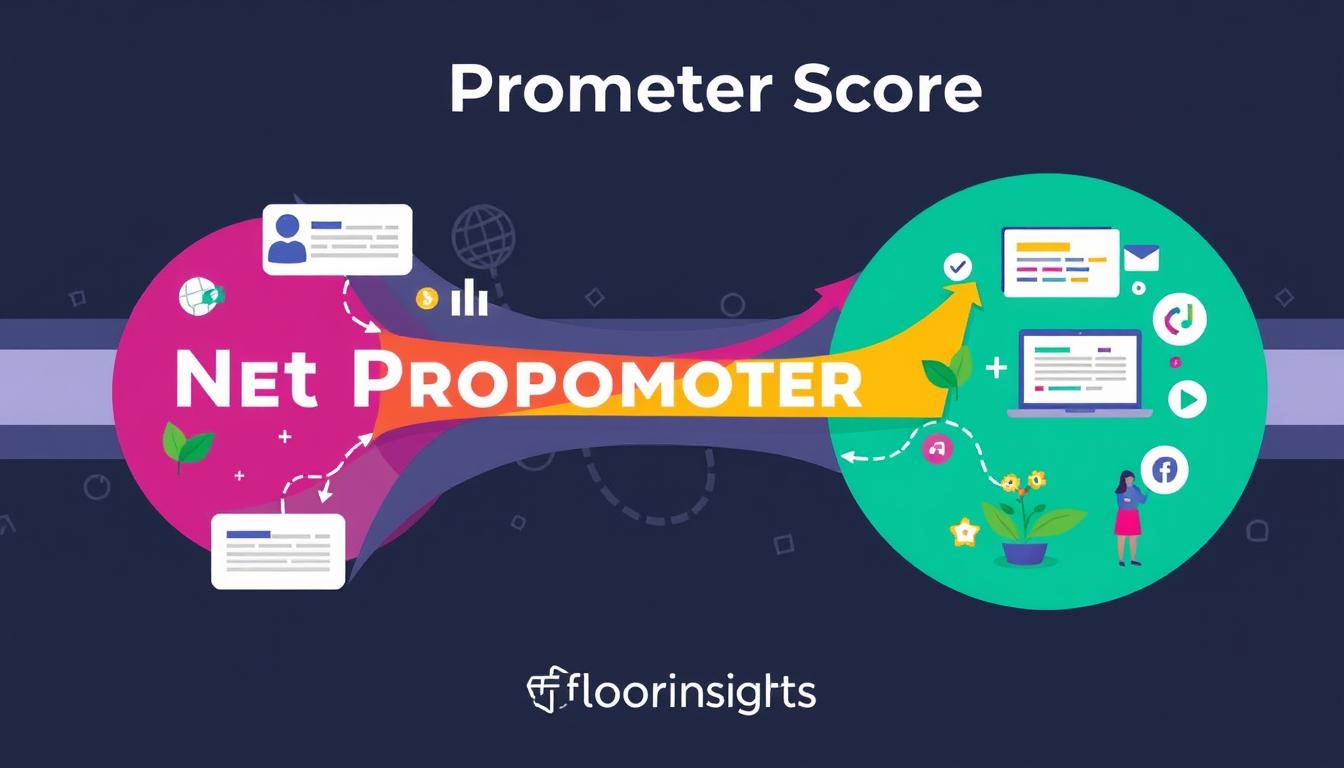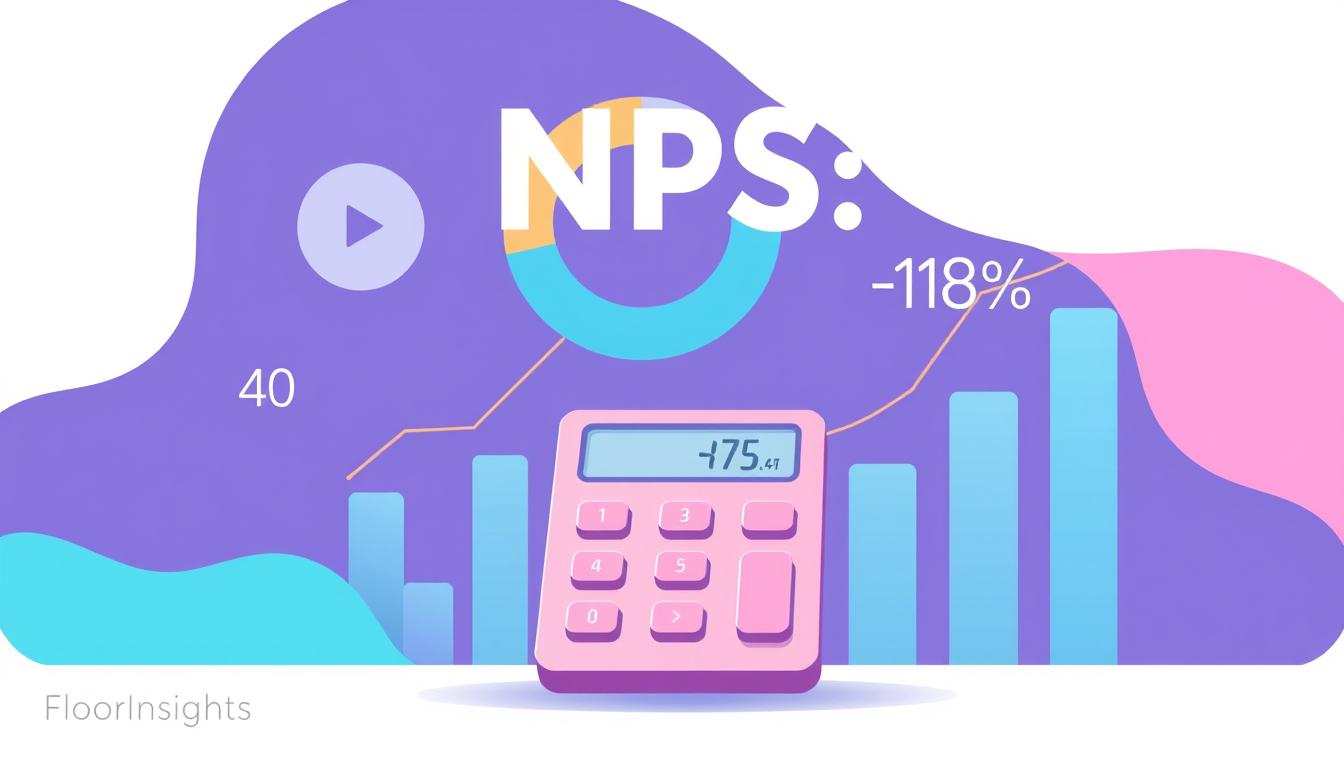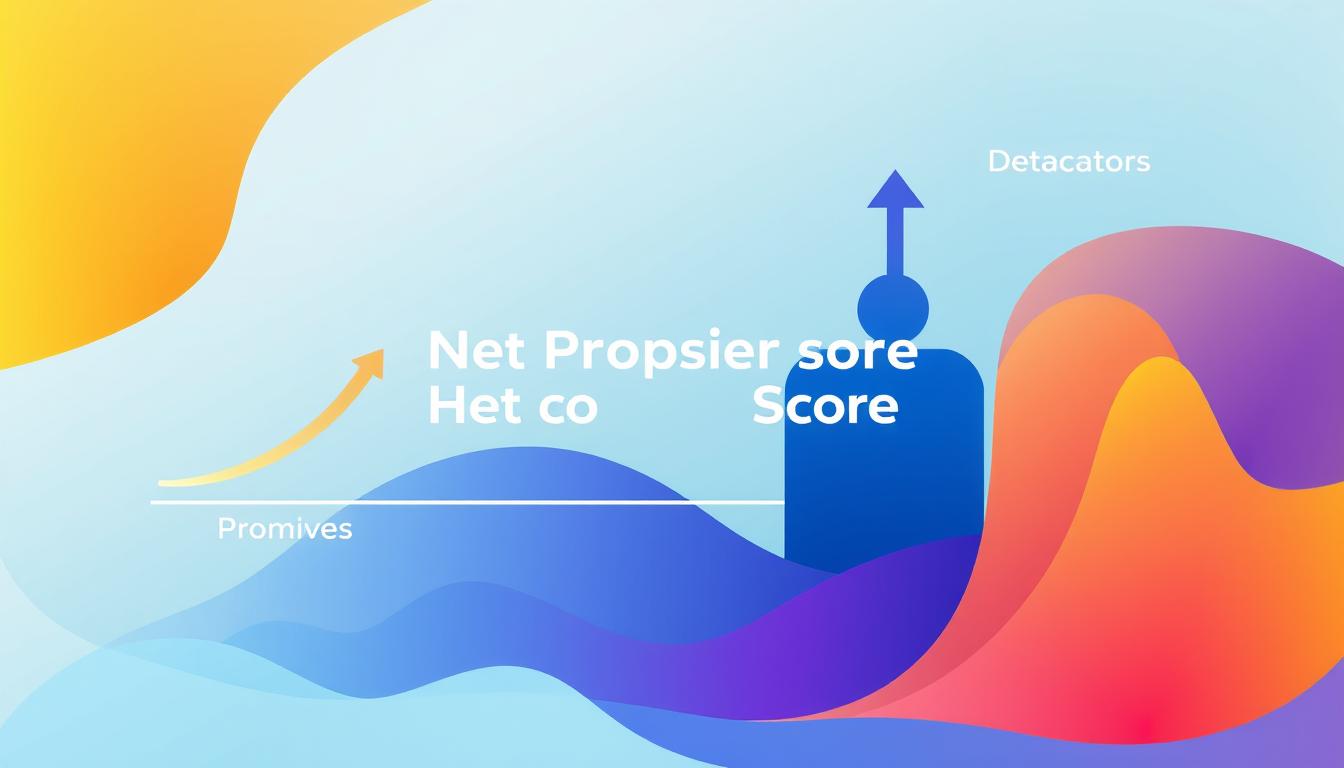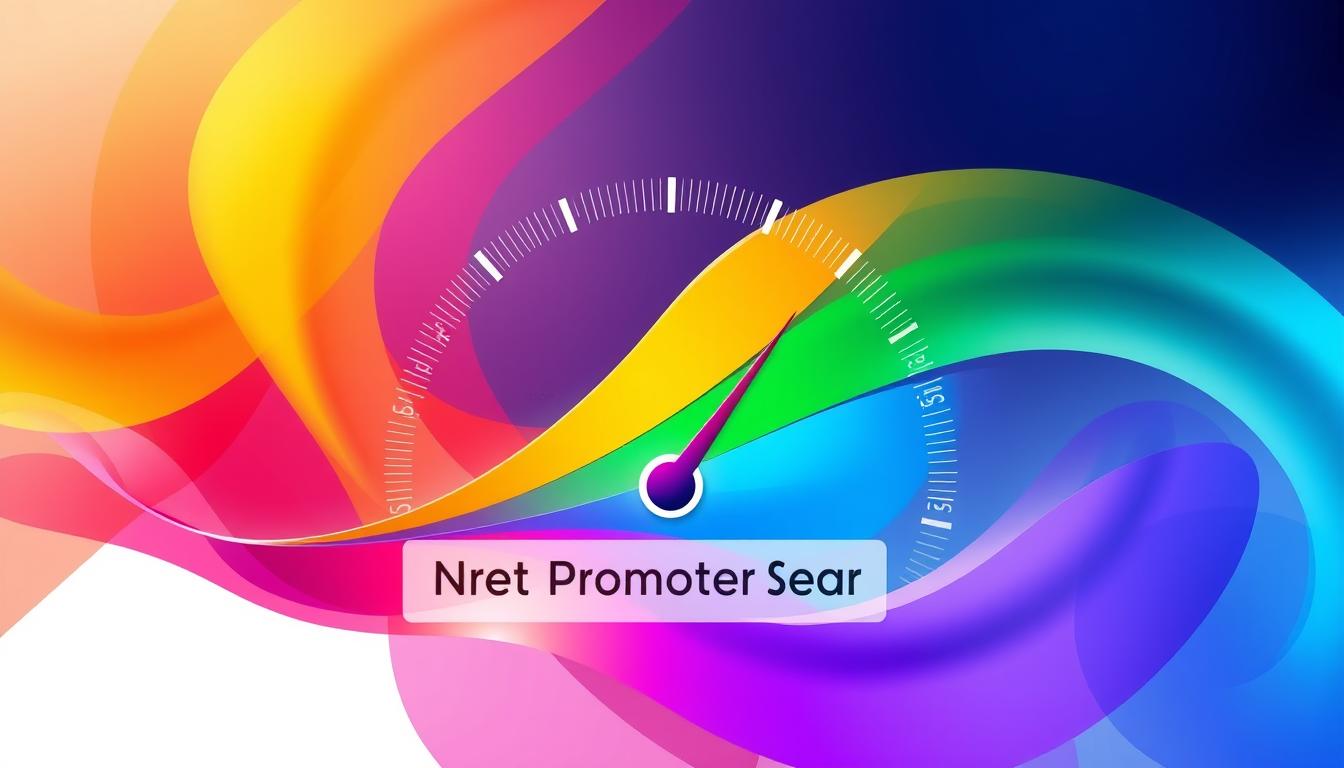In today’s competitive market, leveraging the right tools to enhance customer loyalty and engagement is paramount. One such influential tool is the Net Promoter Score (NPS), an effective customer loyalty metric that plays a vital role in shaping successful content marketing strategies. By understanding the sentiments of our customers, NPS provides invaluable insights that help us craft compelling and targeted content. This section will delve into the significance of the Net Promoter Score, illustrating how it can transform our content marketing efforts and bolster customer relationship management.
Key Takeaways
- NPS is a powerful customer loyalty metric integral to content marketing strategies.
- Understanding NPS helps create content that aligns with customer preferences and sentiments.
- Leveraging NPS data aids in enhancing customer engagement and loyalty.
- Targeted content based on NPS can drive more effective marketing efforts.
- Real-world examples demonstrate the transformative potential of NPS in content marketing.
Introduction to Net Promoter Score (NPS)
The Net Promoter Score (NPS) is a powerful feedback measurement tool that aids businesses in understanding customer loyalty and satisfaction. Unlike traditional metrics, NPS provides a straightforward approach to evaluate customer sentiment. It’s based on a simple question: “How likely are you to recommend our product or service to others?” This succinct query captures the essence of customer experiences, allowing companies to take actionable steps toward improvement.
Definition of NPS
NPS divides respondents into three categories: Promoters, Passives, and Detractors. Promoters are loyal enthusiasts who will keep buying and refer others, fueling growth. Passives are satisfied but unenthusiastic customers who are vulnerable to competitive offerings. Detractors are unhappy customers who can damage your brand and impede growth through negative word-of-mouth. By simply subtracting the percentage of Detractors from the percentage of Promoters, you get the NPS score, a clear indicator of overall customer loyalty.
History and Evolution
The concept of the Net Promoter Score was introduced by Fred Reichheld in 2003, within an article published in the Harvard Business Review. Since then, it has evolved into a globally recognized standard for feedback measurement. Over the years, the NPS survey has been adopted by industry giants such as Apple, Amazon, and Netflix, proving its effectiveness in driving customer-centric strategies. By continually refining the NPS methodology, businesses have been able to streamline their focus on customer experiences, thus fostering long-term loyalty and growth.
By leveraging NPS surveys effectively, companies can transcend traditional customer satisfaction metrics, simplifying how they gauge and react to customer sentiment. This historical evolution highlights the strategic importance of feedback measurement tools like NPS in today’s highly competitive market landscape.
The Importance of Customer Feedback Measurement
Customer feedback measurement stands as a cornerstone in understanding clients’ needs and expectations. In today’s competitive market, implementing a robust customer satisfaction metric is pivotal for businesses aiming to enhance their service quality. One of the most effective metrics is the Net Promoter Score (NPS).
Measuring Customer Satisfaction
Using NPS as a customer satisfaction metric provides a straightforward yet comprehensive approach. By asking customers a simple question about their willingness to recommend your product or service to others, companies can gain valuable insights. This measurement goes beyond numerical data, delving into the reasons behind customer loyalty or discontent.
Benefits of NPS Surveys
The benefits of NPS surveys are extensive. Firstly, they offer a clear snapshot of customer sentiment, allowing companies to identify strengths and weaknesses. Secondly, they facilitate a feedback loop, empowering businesses to act on customer suggestions and complaints effectively. Lastly, these surveys drive improved business performance by fostering a customer-centric approach, ultimately leading to enhanced customer satisfaction and loyalty.
To summarize, the benefits of NPS as a customer satisfaction metric make it an indispensable tool for businesses striving to stay ahead in an ever-evolving marketplace.
Understanding Promoters, Detractors, and Passives
As we delve into the intricacies of Net Promoter Score (NPS), it’s important to understand the three distinct categories of respondents: Promoters, Detractors, and Passives. Each group offers unique insights that can shape our content marketing strategies effectively.
Promoters are our brand enthusiasts who are highly likely to recommend our products or services to others. They are instrumental in driving word-of-mouth marketing and brand loyalty. By creating content that resonates with Promoters, we can amplify their positive experiences and harness their power as brand advocates.
Detractors, on the other hand, are dissatisfied customers who are unlikely to recommend our brand and might even discourage others. Addressing the concerns of Detractors through targeted content can help convert their negative experiences into positive ones, thus potentially reducing churn.
Passives are neutral respondents who are neither overly enthusiastic nor particularly dissatisfied. They provide a golden opportunity to tip the balance in favor of becoming Promoters. Engaging this group with persuasive and informative content can help enhance their overall satisfaction and loyalty.
| Category | Definition | Strategy |
|---|---|---|
| Promoters | Score of 9-10 | Amplify positive experiences through high-quality content and exclusive offers. |
| Detractors | Score of 0-6 | Address concerns via responsive content and improved customer service. |
| Passives | Score of 7-8 | Engage with informative and persuasive content to boost satisfaction. |
Understanding the specific behaviors and tendencies of Promoters, Detractors, and Passives enables us to tailor our content marketing initiatives more effectively. This nuanced approach ensures that we can foster a stronger, more engaged customer base, ultimately driving business growth and success.
The Role of NPS in Crafting Content Strategies
Understanding the impact of the Net Promoter Score (NPS) is pivotal in refining our content marketing strategies. By leveraging the insights derived from NPS data, we can align our content creation efforts with customer sentiment, ensuring our messaging resonates effectively with our audience.
Aligning Content with Customer Sentiment
NPS serves as a crucial indicator of customer sentiment, offering insights into what our audience truly values. By dissecting the feedback from Promoters, Detractors, and Passives, we can tailor our content to address specific needs and concerns.
Feedback from Promoters highlights what’s working well in our content, while Detractors provide valuable constructive criticism. Passives, on the other hand, offer a neutral perspective, shedding light on areas needing improvement without strong positive or negative bias.
Creating Targeted Content Based on NPS
Based on NPS results, we can craft content that directly reflects customer feedback, thereby enhancing the relevance and effectiveness of our content marketing strategies. This data-driven approach ensures that each piece of content addresses specific sentiments expressed by different customer segments.
| Customer Segment | Content Focus |
|---|---|
| Promoters | Highlight successful products, share positive testimonials |
| Detractors | Address criticisms, provide solutions to common issues |
| Passives | Emphasize benefits, provide additional value to neutral customers |
In conclusion, by integrating insights from the Net Promoter Score into our content marketing strategies, we can create highly targeted and impactful content. This not only amplifies customer satisfaction but also drives overall business growth.
Enhancing Customer Loyalty through NPS-Driven Content
Enhancing customer loyalty is a critical objective for any business, particularly in an increasingly competitive market. By leveraging NPS-driven content strategies, brands can significantly bolster this loyalty. Net Promoter Score (NPS) provides a solid foundation for creating personalized and relevant content that resonates with the target audience, thereby fostering a sense of trust and belonging.
When we analyze NPS feedback, we garner insights into customer sentiment and preferences. This allows us to tailor our content strategies to address specific customer needs, creating a more engaging experience for the audience. Here are some key ways in which NPS-driven content can enhance customer loyalty:
- Personalized Content: NPS data helps us identify unique customer preferences, enabling the creation of customized content that directly addresses those preferences. This makes customers feel valued and understood.
- Improved Customer Engagement: By producing content that reflects customer insights from NPS data, we can engage users more effectively, encouraging them to interact with our brand more frequently.
- Enhanced Trust: Content that addresses customer concerns and highlights positive experiences builds trust. Trust, in turn, leads to loyalty.
- Nurturing Advocacy: Loyal customers are often the best advocates. NPS-driven content can transform satisfied customers into brand advocates who spread positive word-of-mouth.
For instance, companies like Apple and Amazon have leveraged NPS surveys to drive their content strategies. Their personalized and responsive content models serve as exemplary cases of how understanding and acting on customer feedback can enhance loyalty and retention.
| Strategy | Benefit |
|---|---|
| Personalized Content | Addresses customer preferences |
| Improved Engagement | Encourages frequent interactions |
| Enhanced Trust | Builds customer confidence |
| Nurturing Advocacy | Transforms customers into advocates |
In conclusion, enhancing customer loyalty through NPS-driven content strategies is not just about creating more content but creating the right content. By listening to our customers and tailoring our approach, we can build stronger, more loyal relationships.
Best Practices for Implementing NPS Surveys
Implementing NPS surveys effectively requires a tactful approach that ensures high response rates and invaluable insights. Our goal is to provide you with strategies to design and analyze these surveys effectively.

Designing Effective Surveys
The first step to implementing NPS surveys is to craft a well-designed questionnaire. To increase response rates, keep the survey concise and straightforward. It’s crucial to ask clear and relevant questions that encourage honest feedback.
- Keep it short: A brief survey respects your customers’ time and increases completion rates.
- Use clear language: Avoid jargon and make sure your questions are easily understood.
- Be specific: Tailor the questions to address specific touchpoints of your customer’s journey.
- Follow-up: Send a thank you note or a quick follow-up message to show appreciation and engagement.
Analyzing NPS Data for Content Insights
Once the data is collected, analyzing NPS data becomes crucial to derive actionable insights. This step involves interpreting the feedback to craft content strategies that are sharply aligned with customer sentiments.
| Aspect | Promoter Insight | Detractor Insight |
|---|---|---|
| Content Preferences | Highlight popular content types | Identify gaps and areas of improvement |
| Customer Sentiment | Leverage positive sentiment in campaigns | Address negative feedback with targeted content |
| Engagement Metrics | Enhance engaging content forms | Revise underperforming content |
By implementing NPS surveys strategically and analyzing NPS data thoroughly, we can continuously refine our content marketing efforts, fostering improved customer satisfaction and loyalty.
Case Study: Successful NPS-Driven Content Marketing Campaigns
By understanding the impact of Net Promoter Score (NPS) on content strategies, numerous brands have successfully executed targeted campaigns. Let’s delve into two case studies that highlight how NPS-driven content marketing can lead to significant outcomes.
Case Study 1
Amazon, a global e-commerce giant, initiated a campaign to boost Prime membership retention through NPS insights. By analyzing feedback from promoters, detractors, and passives, Amazon identified key areas of improvement in their content. They focused on creating personalized product recommendations and exclusive content for Prime members.
The campaign’s success is reflected in the increased engagement rates and a significant reduction in churn. Utilizing NPS-driven content marketing allowed Amazon to tailor their strategy to meet customer preferences, ensuring their content remained relevant and engaging.
Case Study 2
Another exemplary case is Spotify’s personalized playlists campaign. Leveraging NPS data, Spotify identified the features that their promoters valued the most and integrated these insights into their content strategy. They launched customized playlists and made user experience enhancements based on the feedback collected from their most loyal customers.
This campaign resulted in increased user satisfaction and higher retention rates, showcasing the power of NPS-driven content marketing. Spotify’s approach demonstrates that understanding and acting upon customer feedback can create successful campaigns that resonate deeply with the audience.
Challenges and Solutions in Using NPS for Content Marketing
Integrating Net Promoter Score (NPS) with content marketing can provide invaluable insights, yet there are several challenges that businesses may face. Understanding these obstacles and the corresponding solutions can help us create more effective strategies.
One of the primary challenges in NPS is the risk of data interpretation errors. If the feedback collected is misinterpreted, it can lead to misguided content strategies. A lack of clarity on how to analyze and utilize NPS data effectively can hinder our efforts.
To counter this, we should ensure proper training for our marketing teams on data analysis and interpretation. Utilizing advanced analytics tools and software specifically designed for NPS can also be a significant aid in accurately interpreting customer feedback.
Another common issue is survey fatigue. Customers may become uninterested if they are bombarded with frequent surveys, which can result in lower response rates and less reliable data. It’s crucial to balance the frequency of surveys to maintain their effectiveness.
We can address survey fatigue by keeping surveys short, relevant, and user-friendly. Additionally, offering incentives for completed surveys can also improve response rates and maintain engagement levels.
Aligning content strategies with evolving customer expectations is another significant challenge. As customer needs and preferences change, so must our content. This requires a dynamic approach to content creation and continuous monitoring of NPS results.
Implementing feedback loops where NPS results directly inform content strategy adjustments can provide ongoing refinement. Regularly analyzing trends and shifts in customer sentiment will help us stay ahead of the curve, ensuring our content remains relevant and engaging.
The following table outlines some major challenges in NPS and their corresponding solutions for content marketing:
| Challenges in NPS | Solutions for Content Marketing |
|---|---|
| Data Interpretation Errors | Provide training and utilize advanced analytics tools |
| Survey Fatigue | Optimize survey frequency, keep it short, offer incentives |
| Evolving Customer Expectations | Implement feedback loops, regularly analyze trends |
Leveraging NPS to Boost Brand Engagement in India
Boosting brand engagement in India through effective use of Net Promoter Scores (NPS) requires a deep understanding of the local market dynamics and consumer behavior. By leveraging NPS data, brands can tailor content to meet the unique preferences of Indian consumers, fostering stronger connections and increased loyalty.
Understanding the Indian Market
The Indian market is incredibly diverse, with varying consumer preferences across different regions, cultures, and socioeconomic groups. To effectively enhance brand engagement in India, it is crucial to comprehend these unique nuances. Utilizing NPS data allows brands to segment their audience based on promoter, detractor, and passive categories, providing valuable insights into customer sentiment.
Strategies for Localizing Content
Localizing content is essential for resonating with Indian consumers. Here are some effective strategies:
- Cultural Relevance: Incorporate local traditions, festivals, and cultural references to make the content more relatable.
- Language Adaptation: Provide content in multiple regional languages to cater to diverse linguistic preferences.
- Personalization: Use NPS data to create personalized content that addresses the specific needs and interests of different customer segments.
By integrating these strategies and continuously analyzing NPS feedback, brands can significantly improve their engagement efforts and drive more meaningful connections with the Indian audience. Localizing content based on NPS insights ensures that marketing efforts are not only effective but also culturally sensitive and resonant. This, in turn, fosters stronger brand loyalty and advocacy, positioning brands favorably in the competitive Indian market.
Measuring the Impact of NPS on Your Content Strategies
Understanding how the impact of NPS on your content strategies can deliver real returns is essential for fostering lasting improvements. It involves evaluating the key performance indicators (KPIs) that highlight progress and effectiveness.
Key Performance Indicators (KPIs)
To measure the effectiveness of your NPS-driven strategies, it is crucial to identify the right KPIs. Some of the most relevant KPIs include:
- Customer Feedback Scores: Frequently monitor the NPS scores to gauge the level of customer satisfaction and loyalty.
- Engagement Metrics: Track metrics such as page views, bounce rates, and average session duration to measure how engaging your content is.
- Conversion Rates: Evaluate how well your content is converting visitors into customers, which can be significantly influenced by the insights gathered from NPS data.
- Social Media Shares: Monitor the shareability of your content as an indication of its resonation with the audience.
- Content Performance Analytics: Utilize advanced content strategy analytics to assess how each piece of content performs relative to others.
By focusing on these KPIs, businesses can fine-tune their content strategies to align more closely with customer expectations and preferences.
Long-term Benefits
The long-term benefits of integrating NPS-driven approaches into content strategies are multifaceted. Some compelling outcomes include:
- Improved Customer Engagement: Regular measurement and adjustments based on NPS can sustain higher levels of customer engagement over time.
- Enhanced Brand Loyalty: By consistently delivering content that resonates with customers, businesses can foster stronger brand loyalty.
- Continuous Content Improvement: The iterative process of using NPS feedback ensures that content quality is always evolving to meet customer standards.
Ultimately, incorporating NPS-driven methods into your content strategy analytics can yield sustained growth and a more coherent, customer-centric approach to content creation and delivery.
Future Trends in NPS and Content Marketing
As we look towards the future, integrating NPS with content marketing will undoubtedly shape new dimensions for businesses globally. Anticipating the changing landscape, staying ahead requires a keen eye on emerging future trends and innovations in customer feedback metrics.
A notable trend is the use of artificial intelligence and machine learning to analyze NPS data more effectively. Enhanced algorithms will provide deeper insights, enabling marketers to tailor their content marketing strategies with precision.
Additionally, the rise of interactive content will play a vital role. Interactive content such as quizzes, polls, and interactive infographics will not only capture customer sentiment efficiently but also engage users more deeply, thereby driving higher NPS scores.
Another anticipated shift involves the heightened use of personalized content. As customer preferences and behaviors become more nuanced, the ability to deliver customized content based on NPS feedback will be crucial to maintain and boost customer loyalty.
Moreover, real-time feedback mechanisms will gain traction. Businesses will increasingly adopt tools that collect and analyze NPS data instantaneously, enabling them to respond promptly to customer needs and improve their content marketing strategies on the fly.
Lastly, the integration of augmented reality (AR) and virtual reality (VR) into content marketing strategies is expected to become more prevalent. Utilizing NPS insights, marketers can create immersive experiences that resonate deeply with their audience, further enhancing engagement and satisfaction levels.
In summary, staying abreast of these future trends in NPS and content marketing will be pivotal for businesses aiming to foster stronger customer relationships and drive impactful content strategies. The journey ahead is dynamic, and those who leverage these innovations will lead the way.
Conclusion
In conclusion, the Net Promoter Score (NPS) has proven to be a powerful tool for driving effective content marketing strategies. Throughout this article, we have explored the multifaceted benefits of implementing NPS, from deeper insights into customer satisfaction to the creation of highly targeted content that resonates with specific audience segments. Understanding customer feedback through NPS allows us to tailor our content strategies, fostering loyalty and enhancing overall customer experience.
One of the key takeaways is how NPS can significantly influence content alignment with customer sentiment. By leveraging the data gathered from NPS surveys, we can craft content that directly addresses the needs and preferences of promoters, passives, and detractors. This not only boosts engagement but also helps in identifying new opportunities for content that can turn passives into promoters.
The Indian market presents unique challenges and opportunities for businesses looking to harness NPS for content marketing. Our discussion highlighted strategies for localizing content that effectively connects with the diverse customer base in India. Ultimately, the utilization of NPS-driven content strategies can solidify a brand’s presence in the market and build stronger customer relationships over time.
As we move forward, it’s essential to measure the impact of NPS on our content strategies continuously, using key performance indicators (KPIs) to gauge success. With a focus on long-term benefits, we can ensure that our content marketing efforts are not only effective but also sustainable in fostering ongoing customer engagement and loyalty.
FAQ
What is the Net Promoter Score (NPS)?
The Net Promoter Score (NPS) is a customer loyalty metric that measures the willingness of customers to recommend a company’s products or services to others. It serves as an indicator of overall customer satisfaction and potential for business growth.
How does NPS drive content marketing strategies?
By leveraging NPS data, businesses can gain invaluable insights into customer sentiment. This information helps shape content marketing strategies that are more targeted, relevant, and effective, ultimately enhancing customer engagement and loyalty.
What are the components of an NPS survey?
An NPS survey typically consists of a single question asking respondents to rate their likelihood of recommending a product or service on a scale from 0 to 10. Respondents are then categorized into Promoters, Passives, and Detractors based on their scores.
How is customer feedback measured using NPS?
NPS measures customer feedback by classifying respondents into three categories: Promoters (scores 9-10), Passives (scores 7-8), and Detractors (scores 0-6). The overall Net Promoter Score is calculated by subtracting the percentage of Detractors from the percentage of Promoters.
What are the benefits of implementing NPS surveys?
Implementing NPS surveys provides actionable insights to improve service quality, enhance the customer experience, and boost overall business performance. These surveys also help identify areas for improvement and track changes in customer sentiment over time.
Who are Promoters, Detractors, and Passives in the context of NPS?
Promoters are customers who rate their likelihood to recommend a product or service at 9 or 10. They are loyal enthusiasts who will keep buying and refer others. Detractors rate their likelihood at 0-6; they are unhappy customers who can damage your brand through negative word-of-mouth. Passives rate their likelihood at 7 or 8; they are satisfied but unenthusiastic customers who are vulnerable to competitive offerings.
How can NPS data be used to create targeted content?
NPS data can be segmented to uncover insights from Promoters, Detractors, and Passives. Understanding the distinct needs and preferences of each group enables businesses to create tailored content that addresses specific concerns, improves engagement, and strengthens customer relationships.
How can NPS-driven content enhance customer loyalty?
NPS-driven content strategies focus on delivering personalized and relevant content that resonates with customers. This approach fosters trust and a sense of belonging, leading to increased customer loyalty and advocacy.
What are some best practices for implementing NPS surveys?
Can you provide examples of successful NPS-driven content marketing campaigns?
Numerous successful content marketing campaigns have been driven by NPS data. For instance, Apple and Amazon have excelled in using NPS insights to refine their content strategies, improve product offerings, and enhance customer engagement and loyalty.
What challenges might businesses face when using NPS for content marketing?
Common challenges include data interpretation errors, survey fatigue among respondents, and aligning content strategies with evolving customer expectations. Solutions involve using advanced analytics tools, keeping surveys engaging yet concise, and regularly updating content based on the latest NPS insights.
How can NPS be leveraged to boost brand engagement in India?
By understanding the unique nuances of the Indian market and tailoring content accordingly, businesses can leverage NPS data to boost brand engagement. Strategies include localizing content to resonate with cultural expectations and preferences, and utilizing customer feedback to refine marketing efforts.
What are the key performance indicators (KPIs) for measuring the impact of NPS on content strategies?
KPIs for measuring the impact of NPS on content strategies include customer satisfaction scores, engagement metrics (such as click-through rates and time spent on content), conversion rates, and overall customer retention rates. Tracking these KPIs over time helps assess the effectiveness of NPS-driven content.
What future trends can we expect in NPS and content marketing?
Future trends in NPS and content marketing may include increased use of artificial intelligence for more personalized content, real-time feedback loops for faster responsiveness, and deeper integration of NPS data with other customer experience metrics to create comprehensive content strategies.
Related Posts
- NPS and Chatbots: Improving Customer Feedback Collection
- Building Referral Programs Based on NPS Feedback
- How to Enhance the Post-Service Experience with NPS Feedback – NPS and Customer Journey
- Using NPS to Respond to Competitors’ Marketing Tactics – NPS and Competitive Analysis
- How NPS Feedback Can Shape Your Product Roadmap – NPS and Product Development
- How to Use NPS to Improve Retail Employee Training – NPS in Retail
- How NPS Shapes the Customer Experience in a Digital World – NPS in Digital Transformation
- Using NPS to Identify Onboarding Weaknesses – NPS and Customer Onboarding






